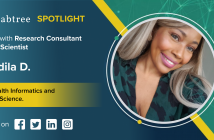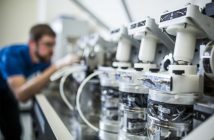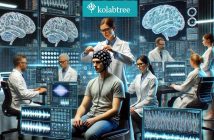Científico de datos y físico Ilan Dan-Gur writes about how he was able to find and pursue investigación topics that used his skills and have the potential to make a real-world impact.
Encontrar un tema interesante y que merezca la pena para investigar, y en el que aplicar toda tu formación y pasión, es una cuestión que preocupa a muchos científicos que no tienen un empleo a tiempo completo. Al buscar en plataformas como Kolabtree para proyectos que puedan beneficiarse de tus conocimientos es una opción importante que puede dar lugar a ganancias económicas y a la satisfacción personal de ayudar a los demás, también puedes sentir la necesidad de encontrar tus propios temas de investigación, ya sea como forma de iniciar un negocio o para hacerte un nombre y mostrar tus habilidades.
Sin embargo, los científicos creen cada vez más que encontrar temas interesantes para investigar es más difícil ahora que nunca, ya que el conjunto de conocimientos científicos no deja de crecer. Paul Dirac dijo a finales de su vida sobre los primeros días de mecánica cuántica: “It was very easy in those days for any second-rate physicist to do first-rate work…It is very difficult now for a first-rate physicist to do second-rate work.” But if you are not looking to produce anything remotely so grandiose, you may be able to find opportunities if you dig into information and data about topics that are interesting to you even if you are working from home using only your computer and WiFi (along with your college education, passion to investigate, and perhaps the local public library). For example, you may be able to analyze existing data in a new way that no one had thought of (or at least no one had published about), or perhaps you will be able to add new data to the current collection.
Mi educación formal es en física y electro-ópticaY aunque mi propia experiencia es obviamente subjetiva, me gustaría ofrecer cuatro ejemplos de temas en los que pude "solo" (bueno, nada en la ciencia lo es realmente) pensar e investigar desde casa (o muchas veces desde una cafetería), que requerían la aplicación de mis conocimientos científicos, tenían una posibilidad razonable de atraer el interés del público, y eran emocionantes de hacer porque garantizaban añadir algo único al cuerpo de conocimientos que había en el mundo.
1. Grupos geográficos de cáncer en EE.UU.
Large databases of U.S. public health records are freely available [1], courtesy of the U.S. government. In 2017, while browsing through cancer-rate data of different U.S. states, and doing basic online research using google, it occurred to me that no article had been published with a focus on shared borders between states with high cancer rates. Specifically, no article had been published that simply counted the number of shared borders between states with the highest cancer rates, even through the data to do such an analysis was readily available on the CDC website, and the investigation would have been straightforward and easy to do. Put differently, my intention was to take a large amount of data and “connect the dots” (i.e. organize) the data in a way that had never been done before, while intentionally ignoring the more complex question of whether such an analysis would be useful and to whom. I posted the investigation and the results on my website [2], as well as a secondary statistical analysis [3].
Además, mientras realizaba el análisis y examinaba los datos, me di cuenta de que era necesario acuñar y definir un nuevo término que era fundamental para el análisis, una "relación de frontera compartida", y que añadía emoción a la investigación.
2. La longevidad en Estados Unidos
Al igual que en el ejemplo 1, utilizando los datos estadísticos de mortalidad de los Estados Unidos, he ideado e investigado cuestiones únicas relacionadas con la longevidad [4].
3. Base de datos de imágenes de lunares de la piel
While today there is a large selection of mobile apps to analyze skin moles for signs of cancer, long before smartphones apps became popular I was the first to offer the public a free advice on signs of skin cancer [5] in return for posting their mole images on my website. While my intention was to educate the public about signs of skin cancer, as well as to advertise a software I had written for performing the analysis (see example 4 below), the result of offering a free analysis was the largest online database of user-contributed skin mole images [6], which, as I later found out, was used (with proper accreditation to my company, Opticom Data Research) in a book published in 2015 [7, 8] discussing advancements in matemáticas y estadísticas (unrelated to my own website and analysis).
4. Análisis automatizado de los lunares de la piel
En 2001, después de que varios dermatólogos me dijeran que tenía un alto riesgo de padecer cáncer de piel, y tras haberme sometido a ocho biopsias cutáneas, decidí escribir (e intentar vender) un software para ordenadores personales (que escribí en su momento utilizando C++ [9], y que más recientemente traduje a JavaScript para su uso gratuito en navegadores web [10, 11, 12]), que analizaba imágenes de lunares. Antes de que los smartphones y las aplicaciones móviles se hicieran populares, pude vender copias del software C++ en todo el mundo, junto con un sencillo accesorio mecánico que diseñé para sujetar una cámara cerca de la piel.
REFERENCIAS
- [1] https://wonder.cdc.gov/DataSets.html
- [2] http://opticomdataresearch.com/statistics/cancer/clusters/main.htm
- [3] http://opticomdataresearch.com/statistics/cancer/clusters/shared-borders-statistics.htm
- [4] http://opticomdataresearch.com/statistics/how-long-will-i-live.htm
- [5] https://www.prweb.com/releases/2008/07/prweb1060104.htm
- [6] http://opticomdataresearch.com/mobile/mole-on-skin.htm
- [7] Aplicaciones del álgebra computacional (actas de Springer en matemáticas y estadística, 2015)
- [8] https://books.google.ca/books?id=tW0uDwAAQBAJ&pg=PA184&dq=opticom+data+research
- [9] http://opticomdataresearch.com/molesense.htm
- [10] https://chrome.google.com/webstore/search/skin%20cancer
- [11] http://opticomdataresearch.com/mobile/skin-cancer-image-search.htm
- [12] http://www.opticomdataresearch.com/mobile/atypical-mole.htm







